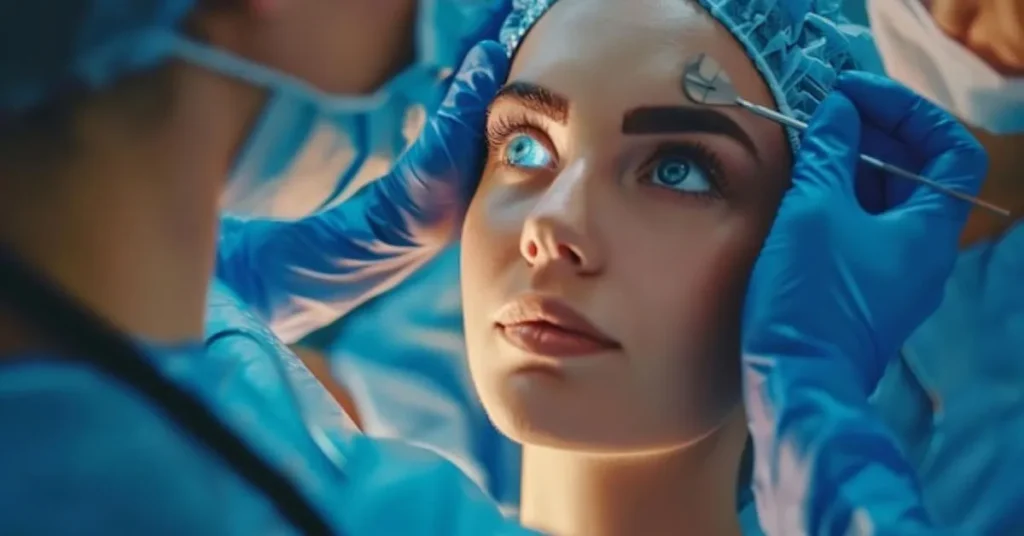Eyelid surgery can be a life-changing procedure, not only for aesthetic enhancement but also for functional improvements. However, the cost of eyelid surgery can be a significant barrier. The good news is that insurance can sometimes cover the cost if the surgery is deemed medically necessary. Let’s explore how you can navigate the insurance landscape to get your eyelid surgery covered.
Understanding Eyelid Surgery
What is Eyelid Surgery?
Eyelid surgery, also known as blepharoplasty, involves removing excess skin, muscle, and sometimes fat from the upper or lower eyelids. This procedure can improve vision in older patients whose sagging upper eyelids get in the way of their sight and can make eyes appear more alert and youthful.
Types of Eyelid Surgery
- Blepharoplasty: This is the most common type of eyelid surgery, addressing droopy eyelids by removing excess skin and fat.
- Ptosis Repair: This surgery corrects drooping of the upper eyelid that can obstruct vision, involving the tightening of the muscles that lift the eyelid.
Medical Necessity vs. Cosmetic Procedure
Defining Medical Necessity
Medical necessity refers to services or procedures required to diagnose or treat an illness, injury, condition, disease, or its symptoms, and that meet accepted standards of medicine. For insurance to cover eyelid surgery, it must be proven that the procedure is not just for cosmetic enhancement but is necessary for medical reasons.
Examples of Medically Necessary Eyelid Surgery
- Visual Impairment: When droopy eyelids significantly block the field of vision.
- Chronic Irritation: Constant irritation from excess skin rubbing against the eye.
- Difficulty Wearing Glasses or Contact Lenses: When excess skin interferes with wearing vision correction devices.
Cosmetic Eyelid Surgery Overview
Cosmetic eyelid surgery is performed to improve appearance rather than to correct a medical problem. Insurance companies typically do not cover procedures done solely for cosmetic reasons.
Insurance Coverage Criteria
General Criteria for Insurance Coverage
Insurance companies generally require proof that a procedure is medically necessary. This includes detailed documentation from a healthcare provider outlining the medical need.
Specific Criteria for Eyelid Surgery
For eyelid surgery, the specific criteria can include:
- Demonstrable vision impairment.
- Documented chronic symptoms (e.g., irritation, infections).
- Impact on daily activities (e.g., reading, driving).
Documentation Required
Documentation usually includes:
- A detailed letter from your healthcare provider.
- Results from diagnostic tests (e.g., visual field test).
- Photographic evidence showing the condition.
Getting a Professional Evaluation
Importance of Seeing a Specialist
Consulting with a specialist, such as an ophthalmologist or plastic surgeon, is crucial. They can provide a thorough evaluation and necessary documentation to support your insurance claim.
How to Find a Qualified Surgeon
Look for board-certified surgeons with extensive experience in eyelid surgery. Recommendations from your primary care physician or online reviews can also be helpful.
What to Expect During the Evaluation
During the evaluation, the surgeon will assess your eyelids, conduct tests to measure visual impairment, and discuss your symptoms and medical history. This information will be critical in building a case for medical necessity.
Gathering Supporting Documentation
Medical Records
Collect all relevant medical records, including past treatments for eyelid issues, symptoms, and any previous consultations or diagnoses.
Photographic Evidence
Photographic evidence showing the condition of your eyelids is essential. Photos should clearly depict the degree of droopiness or sagging and how it affects your vision.
Personal Testimonies
Personal testimonies from yourself or others about how your condition affects your daily life can strengthen your case. Describe difficulties in performing everyday activities due to your eyelid issues.
Pre-Surgery Tests and Examinations
Visual Field Test
A visual field test measures your peripheral vision and can provide objective evidence of vision impairment caused by droopy eyelids. This test is often a critical component of the documentation needed for insurance approval.
Other Diagnostic Tests
Additional tests might include tear production tests, photographs of the eyelids, and measurements of the eyelid position.
Working with Your Surgeon
Communication with Your Surgeon
Clear communication with your surgeon about the insurance process is vital. Ensure they understand the criteria required for insurance approval and are willing to provide detailed documentation.
Surgeon’s Role in the Insurance Process
Your surgeon will need to provide a comprehensive report outlining the medical necessity of the surgery. They may also need to communicate directly with the insurance company to advocate for your case.
Preparing a Strong Case
Work closely with your surgeon to gather all necessary documentation and prepare a strong case. Ensure all forms are completed accurately and thoroughly.
Submitting an Insurance Claim
How to Submit a Claim
Follow your insurance company’s specific procedures for submitting a claim. This typically involves submitting the documentation through an online portal or mailing it to the appropriate department.
Tips for a Successful Claim Submission
- Ensure all required documents are included.
- Provide clear, detailed information about your condition.
- Follow up with the insurance company to confirm receipt and review status.
Common Mistakes to Avoid
- Incomplete documentation.
- Failing to follow the specific instructions of your insurance provider.
- Not keeping copies of all submitted documents.
Appealing a Denied Claim
Reasons for Claim Denial
Common reasons for denial include insufficient documentation, not meeting the criteria for medical necessity, or clerical errors in the submission.
Steps to Appeal
- Request a detailed explanation for the denial.
- Gather additional documentation or evidence as needed.
- Submit an appeal letter with supporting documents.
Tips for a Successful Appeal
- Be persistent and thorough.
- Clearly address the reasons for denial in your appeal.
- Consider seeking assistance from a patient advocate or your surgeon.
Alternative Funding Options
Payment Plans
Many surgeons offer payment plans to help manage the cost of the procedure over time.
Medical Loans
Medical loans are available through various financial institutions and can provide the necessary funds upfront, with manageable repayment terms.
Health Savings Accounts (HSAs)
If you have an HSA, you can use these pre-tax funds to cover medical expenses, including eyelid surgery if it is deemed medically necessary.
Post-Surgery Considerations
Post-Operative Care
Follow your surgeon’s instructions for post-operative care to ensure a smooth recovery. This includes managing swelling, avoiding strenuous activities, and attending follow-up appointments.
Monitoring and Follow-Up
Regular follow-up appointments with your surgeon are important to monitor healing and address any complications early.
Managing Expectations
Understand that results may take time to fully manifest and be patient with the recovery process. Discuss realistic outcomes with your surgeon beforehand.
Success Stories
Real-Life Examples of Successful Insurance Claims
Hearing about others’ successful claims can be encouraging. Many patients have successfully navigated the insurance process and received coverage for their eyelid surgery due to thorough documentation and persistence.
Testimonials
Testimonials from those who have undergone the process can provide insights and tips on achieving a successful insurance claim.
Conclusion
Getting insurance to cover eyelid surgery requires demonstrating that the procedure is medically necessary. By understanding the criteria, gathering thorough documentation, and working closely with your surgeon, you can build a strong case for insurance coverage. Persistence and careful preparation are key to navigating this process successfully.
FAQs
How long does the insurance approval process take?
The approval process can vary but typically takes anywhere from a few weeks to a couple of months, depending on the insurance provider and the completeness of your documentation.
Can any doctor perform the required evaluation for insurance?
It’s best to see a specialist, such as an ophthalmologist or plastic surgeon, who has experience in diagnosing and treating eyelid conditions. Their expertise will provide more credible documentation.
What if my insurance only covers part of the surgery?
You can explore alternative funding options like payment plans, medical loans, or using a Health Savings Account (HSA) to cover the remaining costs.
Are there any risks involved in eyelid surgery?
Like any surgery, eyelid surgery comes with risks, including infection, bleeding, dry eyes, and temporary vision issues. Discuss potential risks with your surgeon beforehand.
How can I strengthen my case for medical necessity?
Gather comprehensive documentation, including medical records, visual field test results, photographic evidence, and personal testimonies. Work closely with your surgeon to ensure all paperwork is thorough and accurate.







